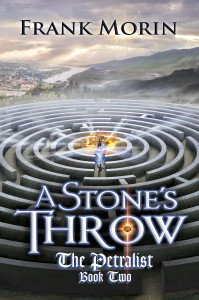When it comes to giving advice regarding plot structure, I have found that most everyone seems to focus on the time from the beginning of the book to the climax. In a way, I completely understand. After all, that’s where the majority of your story happens. However, I find that some people seem to forget that after the climax the story must come to a graceful ending, and that this resolution is as essential to the story as any other part. You’ve made the characters struggle and suffer for their triumph, so they deserve a little time off right?
The denouement is more than just sympathy for a cast you’ve spent years torturing. It’s a matter of practicality. The climax of a story is supposed to be the defining challenge of the protagonists’ life and potentially for the entire world they live in. It doesn’t matter if the story takes a single volume or a twenty part series to tell, once the climax is resolved, the story is done. Young authors need to learn to let go even when, or perhaps especially when, you don’t want to.
I really admire a storyteller who knows when to take their bows and move on to the next work. After all, we are writers people! We are not limited to a single story. Sometimes the best endings for an old story is the beginning of a new one. The more one writes, the better the stories get. Often it is best for our career to work on something else for a while and then return to an old project when the time is right.
Over the past couple years, I’ve been pursuing a deal in traditional publishing. For the first time, I’ve had a story that I knew was good, and that friends who I trust to be honest with me say is near publishable. I’ve devoted all my time and attention to this single story. Not just drafting and editing, but also networking and promoting myself in an attempt to secure a traditional publishing contract. I’ve been obsessed with the idea, and in my attachment forgot to move on.Don’t get me wrong, the story’s not dead to me. I still believe in its potential and will continue to shop it until I find a good home for it. Publishing takes a long time. With eight months to a year between submitting the story and hearing back, I just can’t afford to wait for it anymore. It’s like trying to fish with only one line in the water. You might eventually catch something, but you may be waiting a while for that first bite.
So, in 2016 I’m going to work on something completely different. Up until now I’ve written fantasy, both the sword & sorcery and urban varieties. In order to force myself to grow as a writer, I am trying my hand at a bit of science fiction. So far, it’s been a fun ride and has forced me to rethink many of the assumptions and tropes I had grown used to relying on. Even better, once I finish drafting and polishing this new manuscript, I’ll be able to cast a second line into the pool. Then I’ll start again. And again. Eventually, I’ll get a bite.




